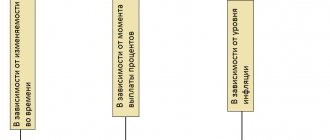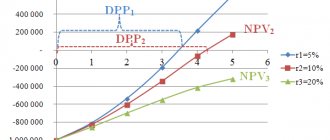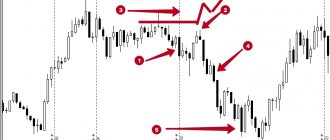The discount rate implies two basic concepts:
- This is the interest rate at which the Central Bank of Russia provides loans to commercial banks. In practice, this indicator is called the “refinancing rate”. This indicator is the basis for resolving controversial issues regarding the accrual of penalties against the party that violated the terms of the contract. The refinancing rate is also used in legislation when calculating payments between the parties.
- This is the price at which a bill of exchange is purchased before it becomes due.
On March 24, 2021, the board of directors of the Central Bank of Russia decided to set the discount rate at 9.75%. And in accordance with the resolution of the Central Bank of the Russian Federation dated December 31, 2015, stating that the refinancing rate is fully consistent with the discount rate and is not set independently, the refinancing rate today is also 9.75%.
It is worth noting that the discount rate in the form of the refinancing rate until January 1, 2016 was only of a reference nature and was used to calculate fines and additional payments between individuals and legal entities. But already in 2021 it began to be accepted as a powerful lever for managing the country’s financial flows and a regulator of economic stability.
It is worth noting that since January 1, 2021, there has been a constant decrease in the refinancing rate in Russia.
Changes in rates by year in the table
The regulator carefully analyzes the current state of affairs and, depending on micro and macroeconomic indicators, decides whether to leave the figure at the same level or increase/decrease it. Analyzing changes in the rate of the Central Bank of the Russian Federation, we see that since 2021 its value has been constantly decreasing. The value of the rate today and its changes in values are shown below in the table: “Change in the rate by year.”
| VALIDITY PERIOD | SIZE, % ANNUAL |
| 2021 | |
| from April 26 to present | 5 |
| from March 19 to April 25 | 4,5 |
| 2020 | |
| from July 24 to March 19, 2021 | 4,25 |
| from June 19 to July 23 | 4,5 |
| from April 24 to June 18 | 5,5 |
| from February 10 to April 23 | 6,00 |
| 2018-2019 | |
| from December 16 to February 9, 2020 | 6,25 |
| from October 28 to December 15 | 6,50 |
| from September 9 to October 27 | 7,00 |
| from July 29 to September 8 | 7,25 |
| from June 17 to July 28 | 7,5 |
| December 17 – June 16 | 7,75 |
| September 17 – December 16 | 7,5 |
| March 26 – September 16 | 7,25 |
| February 12 – March 25 | 7,5 |
| January 1 – February 11 | 7,75 |
| 2017 | |
| December 18 -31 | 7,75 |
| October 30 – December 17 | 8,25 |
| September 18 – October 29 | 8,50 |
| June 19 – September 17 | 9,00 |
| May 2 – June 18 | 9,25 |
| March 27 -May 1 | 9,75 |
| 2016 | |
| September 19 – March 26 | 10,00 |
| June 14 – September 18 | 10,50 |
| January 1 – June 13 | 11,00 |
Types of discount rates
In the economic literature, there are three main types of discount rates, which are calculated using individual formulas based on the calculation conditions.
Simple discount rate
This type of rate assumes the same amount of interest charged throughout the duration of the agreement. This means that the base for calculating interest always remains unchanged throughout the entire settlement period.
Simple discount rate formula:
P=SS*n*d=S(1-nd)
Where:
- P – payment amount;
- S – total amount of obligation (payment amount plus interest);
- n – discount rate expressed in shares;
- d – number of periods before payment.
Complex discount rate
A compound discount rate differs in that the base for calculating interest changes each time. The reason for the changes is the accrued interest over the past period. In other words, the accumulated interest on the deposit becomes part of the amount on which interest is calculated
Therefore, the amount issued by the bank when discounting a bill of exchange is calculated using the formula:
P=S(1-〖d)〗^n
Where:
- P – payment amount;
- S – total amount of obligation (payment amount plus interest);
- n – discount rate expressed in shares;
- d – number of periods before payment.
Nominal discount rate
Let the annual compound interest rate be f, and the number of compounding periods in a year m. Then each time interest is calculated at the rate f/m. The rate f is called the funeral rate.
Interest is calculated at the nominal rate according to the formula
P=S(1-〖f/m)〗^mn
Where:
- P – payment amount;
- S – total amount of obligation (payment amount plus interest);
- n – discount rate expressed in shares;
- m – number of periods in a year;
- f – nominal rate.
When deciding on the type of rate, the method of comparing rates from different countries is used. Thus, we can conclude that the decision on the discount rate in the state is made not only after an analysis of the economic situation in the country, but also on the world stage.
When making a deposit in foreign currency, the discount rate is the first thing you should pay attention to. It is this that, as an indicator, will help determine the stability of the national currency.
The rate of growth or decrease in the discount rate will indicate how committed the state is to fighting inflation (depreciation of money) in the country.
A comparison of the discount rates of several countries will help you decide between choosing a foreign currency for a deposit or a loan.
Refinancing from MTS Bank
Max. amount: up to 5,000,000 ₽
Proc. rate: from 9.9%
Min. amount: from 50,000 ₽
Age: from 20 years
Duration: up to 5 years
Duration: up to 5 years
More details at: https://refinansirovanie24.ru/predlozhenija-po-kreditnym-kartam/?elementor-preview=1392&ver=1578592827
Duration: up to 5 years
More details at: https://refinansirovanie24.ru/predlozhenija-po-kreditnym-kartam/?elementor-preview=1392&ver=1578592827
Duration: up to 5 years
More details at: https://refinansirovanie24.ru/predlozhenija-po-kreditnym-kartam/?elementor-preview=1392&ver=1578592827
Duration: up to 5 years
More details at: https://refinansirovanie24.ru/predlozhenija-po-kreditnym-kartam/?elementor-preview=1392&ver=1578592827
Solution: from 1 min.
More details
Where is the refinancing rate applied in practice?
Using this value, the following indicators are calculated:
- the amount of taxation of interest on bank deposits subject to personal income tax;
- calculation of penalties for late taxes;
- the amount of penalties for late payments in housing and communal services;
- tax base for income from savings on interest for the use of loan funds;
- interest under the loan agreement, if its amount is not indicated in the document.
Of course, this is not a complete list. The entire banking sector is regulated by a set rate. Therefore, its size plays a huge role for the economy. The government, understanding the importance of the indicator, tries to avoid sharp jumps in its value. And if such occur, this indicates financial turmoil in the country’s economy.
In commercial banks, the refinancing rate affects the conditions for loans and deposits for individuals and legal entities. Mortgage loans are especially affected by fluctuations. For example, in 2014–2015, many citizens took out mortgages at 20–25%.
In subsequent years, the key rate was regularly reduced, and after it the mortgage interest rate also fell, reaching 10. Old borrowers were not happy with this situation, and in connection with this, a service such as bank refinancing gained enormous popularity - re-issuing old loans for new, more expensive ones. profitable terms.
Why is it needed?
It would seem that the simplest answer to the question of why such a rate is needed is for the Central Bank to make money. After all, he gives out not millions, but billions and even more. It is easy to imagine how much income the Central Bank has, even if the interest on the refinancing rate is only 10-11 points.
Combine all loans into one! Reduce your overpayment and monthly payment!
Refinance
But in reality everything is more complicated. The value of the refinancing rate is very high for the entire economy as a whole.
The size of the refinancing rate is not determined based on how much the Central Bank wants to enrich itself. As we saw above, there are cases when this indicator is set to negative values. No, its size depends on the level of inflation in the country.
You may be interested in the question of how to choose a consumer loan, which is very popular with us.
Let's look at how this mechanism works.
For example, inflation is high and continues to rise. What does it mean? That for the same amount of money at the beginning of the year and at the end (or even with a difference of a couple of months) you can buy different quantities of the same product. For example, for 100 rubles in March you could buy 3 kg of sugar, and in June - only 2 kg 700 g. This means that goods are becoming more expensive, that is, inflation is growing.
What does the Central Bank do in such a situation? Increases the bank's refinancing rate. Bank loans are issued at a higher interest rate. It becomes unprofitable for banks to lend them to the population at a low interest rate. They are also raising rates on consumer, mortgage, and car loans. People are starting to take out loans less willingly, especially for goods - the demand for consumer loans is falling sharply. People stop buying goods that they, by and large, can do without - equipment, furniture, expensive clothes. To spur demand and increase sales, sellers begin to reduce prices. A decrease in prices leads to a drop in inflation, because now for the same amount of money you can buy a larger quantity of the same product (the same sugar, which fell in price because no one wanted to buy expensive sugar or could not - there was not enough money of their own, and loans have become too expensive).
It is clear that the example with sugar is exaggerated - people always buy food. But expensive delicacies and luxury items are not mandatory, and they are purchased only when there is excess money. Therefore, they become cheaper, causing a decrease in inflation.
Is regulation of the Central Bank rate in this case good or bad? After all, as soon as inflation falls, the refinance rate falls. Then loans become cheaper, people begin to take them more willingly (no one wants to overpay) and no longer deny themselves the purchase of goods for which they do not have enough of their own savings.
People buy goods, demand increases, stimulating supply - sellers order more and more goods from enterprises, enterprises increase production. At the same time, high demand also spurs price increases - the store sees that the product is selling well and increases the price tag. As prices rise, inflation begins to rise again. And at this moment, the Central Bank again increases the refinancing rate to make loans more expensive and less accessible.
Since people whose well-being suffers due to the high cost of goods begin to express dissatisfaction with the authorities, inflation is also an important indicator of stability and tranquility in the country. The Central Bank is appointed to regulate this indicator.
In loan agreements you can often find such a thing as an overnight refinancing rate. It is on this basis that the amount of penalties and fines is determined. This indicator is calculated simply - the annual percentage is divided by the number of days in a year.
What is this rate and who sets it?
In simple terms, this is the supply of money to other banks by the Central Bank of the Russian Federation. The Central Bank lends to various financial institutions, and those from these funds issue loans to their clients. Thus, the Bank of Russia releases the country’s monetary reserve into the economy.
The reasons why financial institutions are forced to apply to the Central Bank of Russia for cash loans:
- the need to repay an existing loan with unfavorable terms;
- the desire, through fresh cash injections, to delay the return of borrowed funds for some time.
The name of the rate speaks for itself, because refinancing means paying off debt with a new loan. As a result, the loan remains, but on more favorable terms.
The percentage approved by the Central Bank at which it lends money is called the refinancing rate (Article 40 of the Federal Law No. 86 “On the Central Bank of the Russian Federation” dated July 10, 2002).
Example
. One commercial bank takes 1 million dollars from the Central Bank, which must be repaid in a year with interest accrued over this entire period according to the refinancing rate. During the year, the bank issues loans from these funds to individuals and legal entities at its own, more inflated rates. As a result, this brings the bank a certain profit and the Central Bank receives its share.
On the territory of the Russian Federation, the refinancing rate appeared in 1992. Initially, it was 20%, but due to the difficult economic situation in the country at that time, it immediately collapsed to a three-digit value. So, in 1993 the figure was 210%, after which it began to gradually decline. The only thing that negatively affected this dynamics was the global financial crisis that occurred in 1998. Then the rate briefly soared to 150%. The minimum figure was recorded in 2010 – 7.75%. From June 17, 2019, the Central Bank rate is 7.5
%.
Inflation risks
Due to high political and economic uncertainty, there is a risk that inflation will not reach the target level of 4% in 2021. For example, temporary factors will cease to operate and the propensity of households to save will decrease. In this case, a “discount” at a discount rate of 10% will limit inflation risks.
Inflation dynamics correspond to the forecasts of the Bank of Russia.
Annual inflation continues to decline thanks to the positive dynamics of the ruble exchange rate and a good harvest in 2021. In December, price growth slowed down for all major groups of goods and services. According to the forecast of the Bank of Russia, by the end of 2017, annual inflation will slow down to 4%.
In the future, the refinancing rate will be revised simultaneously with the key rate of the Bank of Russia and by the same amount. I repeat: from January 1, 2021, the value of the discount rate is not published or announced!
Why is that?
On September 13, 2013, the Board of Directors of the Bank of Russia improved the system of monetary policy instruments. It was decided that the key rate now plays the main role in the bank's policy. The refinancing rate is given a secondary role, and its value is given for reference.
Basic interest rate of a regular bank
To a large extent, the base interest rate is an indicator of a particular bank. It determines the base interest rate at which a loan can be issued. Further, various risk factors borne by a particular potential borrower increase this rate.
Banks often indicate a range of rates, for example, 12-18% per annum. Most likely, in this case, 12% is exactly the base rate. But various additives to it that arise as a result of consideration increase the value up to the maximum possible.
If a bank promises to issue a loan at a rate of “from 9%,” most likely, this 9% is the base rate. In fact, the real one will be higher due to surcharges.
So the base interest rate is a value that is relevant to the bank, not the borrower. The bank determines this rate, and when considering the application, adds interest to it based on possible risks.
What surcharges are possible for:
- the client is not included in the salary category. For example, the base rate is 11%, but in the case of a non-paying client, 2% is added;
- the applicant’s refusal to join the insurance program. Moreover, if the bank offers several programs, for example, health protection and employment status, then a premium may be paid for refusal of each product;
- the client has not used the services of this bank before;
- Negative factors were found in the applicant's credit history. Moreover, the worse they are, the higher the percentage will be.
Each bank has its own scheme, and it is not always advertised. Often lenders will simply provide a range. And if you see a rate of 12-18% or from 12% per annum, you don’t need to count on this 12%. This is just a basic value, which in fact is almost impossible to achieve.
A loan at the base rate is issued to ideal applicants from all sides: a salary client, connected to all insurance, has already taken out and paid loans here, there is no negativity in the CI.
When and how often are rates adjusted?
Central banks independently determine the timing of interest rate revisions. For example, in the USA the rate is regulated by the Federal Open Market Committee (FOMC). And needless to say, the whole world is watching their meetings. And usually special committees of national central banks adopt one or another monetary rate at the beginning of the financial year, but if something happens they can change it later.
In the EU, the refinancing rate is regulated by the European Central Bank. In Great Britain - by the Bank of England. In Japan - by the Bank of Japan and so on. The markets also take into account rates from Switzerland, Canada, the RBA, Norway, China, India, Korea and individual European countries such as France, Italy, Germany, Spain and others.
You can find out more about the current interest rates of various banks here.
Base and real rates of different banks
Considering what the base interest rate is, let's turn to the real values of specific banks. Some in their tariffs immediately indicate the base rate and a list of possible surcharges.
- Gazprombank. The base rate depending on the amount is 7.5-11.5%. If the client refuses personal insurance, it increases by 5-6%;
- Raiffeisenbank. The base rate is 8.99-9.99% depending on the amount. If you refuse insurance, it increases to 12.99-13.99%. Maximum values - 13.99% or 17.99%;
- Uralsib. The base rate is 9.9%. But if you refuse insurance - 16.9%. Maximum rates - 11.9% and 18.9% per annum;
- Zenith. The base rate is 10.5%. It increases by 0.4 points when submitting an application through the office. The bank does not indicate the upper limit on its website;
- Rosbank. The base rate is 8.99%, if you refuse insurance - 14.99%. At the same time, due to surcharges, the percentage can increase to 23.12%;
- AK Bars. The base rate is 9.9%. If you refuse insurance, it increases to 12%. For non-salary clients, 0.6% is added with insurance and an additional 10.9% when registering without insurance;
- Revival. The base rate is 9.25 or 9.65% depending on the amount. This is also the rate for salary earners. State employees receive a 2% increase, and all other applicants receive a 3% increase. For holders of a Non-Prostocard of the same bank, the rate is reduced by 1.5%.
It is extremely rare for banks to give a breakdown of the markups; usually they simply say that they set the rate at their own discretion. But in any case, you must understand that the minimum, that is, the basic percentage, is practically unavailable. You should not focus on this smallest limit; banks often use it for marketing purposes, simply to lure potential borrowers.
about the author
Irina Rusanova - higher education at the International East European University in the direction of "Banking". Graduated with honors from the Russian Economic Institute named after G.V. Plekhanov with a major in Finance and Credit. Ten years of experience in leading Russian banks: Alfa-Bank, Renaissance Credit, Home Credit Bank, Delta Credit, ATB, Svyaznoy (closed). He is an analyst and expert of the Brobank service on banking and financial stability. [email protected]
Is this article useful? Not really
Help us find out how much this article helped you. If something is missing or the information is not accurate, please report it below in the comments or write to us by email
Is it possible for a commercial bank to take a lot of money from the Central Bank cheaper, but issue loans at a higher price?
Theoretically, this is possible. But existing competition prevents banks from establishing too large a difference. If the interest rates on loans are too high, the loss of customers is inevitable. As a result, the bank remains a double loser - there is no profit and there is nothing with which to subsequently pay the Central Bank.
In this regard, loan rates in most banking institutions vary slightly.
There are exceptions. Here we are talking about companies specializing primarily in consumer loans in large retail outlets, as well as distributing plastic cards by mail. Such organizations include:
- Home Credit Bank;
- Alfa Bank;
- Russian standard;
- OTP;
- Renaissance.
Their interest rate can vary from 30 to 70%.











